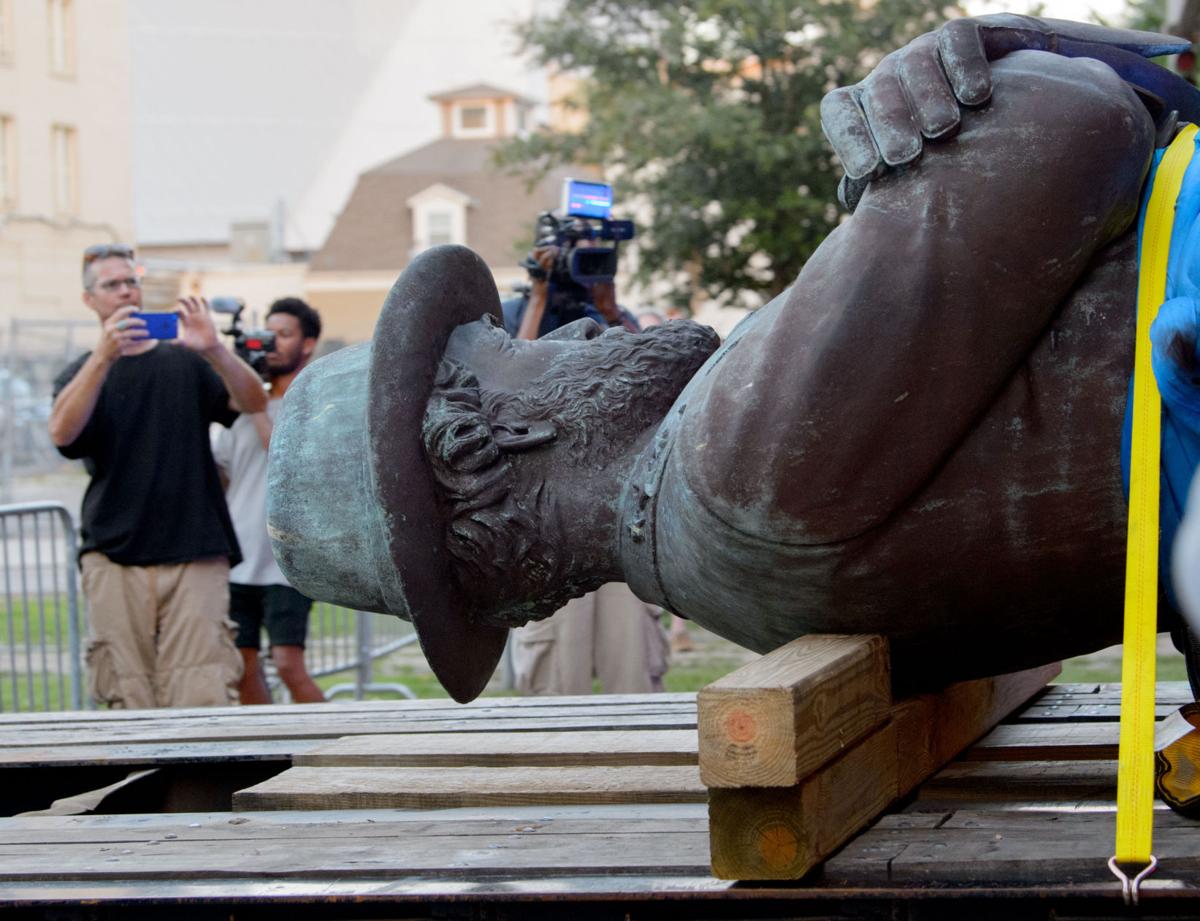By Eric Foner, The New York Times, August 20, 2017
 |
| Statue of Rober E. Lee brought down in New Orleans |
President Trump’s Thursday morning tweet lamenting that the removal of Confederate statues tears apart “the history and culture of our great country” raises numerous questions, among them: Who is encompassed in that “our”?
Mr. Trump may not know it, but he has entered a debate that goes back to the founding of the republic. Should American nationality be based on shared values, regardless of race, ethnicity and national origin, or should it rest on “blood and soil,” to quote the neo-Nazis in Charlottesville, Va., whom Trump has at least partly embraced?
Neither Mr. Trump nor the Charlottesville marchers invented the idea that the United States is essentially a country for white persons. The very first naturalization law, enacted in 1790 to establish guidelines for how immigrants could become American citizens, limited the process to “white” persons.
What about nonwhites born in this country? Before the Civil War, citizenship was largely defined by individual states. Some recognized blacks born within their boundaries as citizens, but many did not. As far as national law was concerned, the question was resolved by the Supreme Court in the infamous Dred Scott decision of 1857. Blacks, wrote Chief Justice Roger B. Taney (a statue of whom was removed from public display in Baltimore this week), were and would always be aliens in America.
This was the law of the land when the Civil War broke out in 1861. This is the tradition that the Southern Confederacy embodied and sought to preserve and that Mr. Trump, inadvertently or not, identifies with by equating the Confederacy with “our history and culture.”
Many Americans, of course, rejected this racial definition of American nationality. Foremost among them were abolitionists, male and female, black and white, who put forward an alternative definition, known today as birthright citizenship. Anybody born in the United States, they insisted, was a citizen, and all citizens should enjoy equality before the law. Abolitionists advocated not only the end of slavery, but also the incorporation of the freed people as equal members of American society.
In the period of Reconstruction that followed the war, this egalitarian vision was, for the first time, written into our laws and Constitution. But the advent of multiracial democracy in the Southern states inspired a wave of terrorist opposition by the Ku Klux Klan and kindred groups, antecedents of the Klansmen and neo-Nazis who marched in Charlottesville. One by one the Reconstruction governments were overthrown, and in the next generation white supremacy again took hold in the South.
When Mr. Trump identifies statues commemorating Confederate leaders as essential parts of “our” history and culture, he is honoring that dark period. Like all monuments, these statues say a lot more about the time they were erected than the historical era they evoke. The great waves of Confederate monument building took place in the 1890s, as the Confederacy was coming to be idealized as the so-called Lost Cause and the Jim Crow system was being fastened upon the South, and in the 1920s, the height of black disenfranchisement, segregation and lynching. The statues were part of the legitimation of this racist regime and of an exclusionary definition of America.
The historian Carl Becker wrote that history is what the present chooses to remember about the past. Historical monuments are, among other things, an expression of power — an indication of who has the power to choose how history is remembered in public places.
If the issue were simply heritage, why are there no statues of Lt. Gen. James Longstreet, one of Gen. Robert E. Lee’s key lieutenants? Not because of poor generalship; indeed, Longstreet warned Lee against undertaking Pickett’s Charge, which ended the battle of Gettysburg. Longstreet’s crime came after the Civil War: He endorsed black male suffrage and commanded the Metropolitan Police of New Orleans, which in 1874 engaged in armed combat with white supremacists seeking to seize control of the state government. Longstreet is not a symbol of white supremacy; therefore he was largely ineligible for commemoration by those who long controlled public memory in the South.
As all historians know, forgetting is as essential to public understandings of history as remembering. Confederate statues do not simply commemorate “our” history, as the president declared. They honor one part of our past. Where are the statues in the former slave states honoring the very large part of the Southern population (beginning with the four million slaves) that sided with the Union rather than the Confederacy? Where are the monuments to the victims of slavery or to the hundreds of black lawmakers who during Reconstruction served in positions ranging from United States senator to justice of the peace to school board official? Excluding blacks from historical recognition has been the other side of the coin of glorifying the Confederacy.
We have come a long way from the days of the Dred Scott decision. But our public monuments have not kept up. The debate unleashed by Charlottesville is a healthy re-examination of the question “Who is an American?” And “our” history and culture is far more complex, diverse and inclusive than the president appears to realize.
We have come a long way from the days of the Dred Scott decision. But our public monuments have not kept up. The debate unleashed by Charlottesville is a healthy re-examination of the question “Who is an American?” And “our” history and culture is far more complex, diverse and inclusive than the president appears to realize.
No comments:
Post a Comment